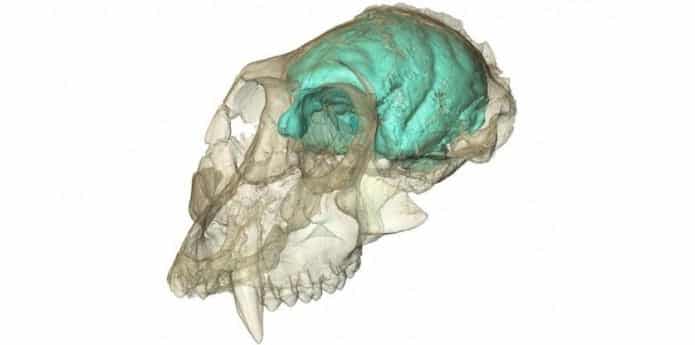15 Million-Year-Old Monkeys Has More Smaller But Complex Brains
The oldest known Monkey, “Victoriapithecus” has smaller brain but it can perform complicated neuron processes.
Scientists revealed a few surprises hidden in a 15 million-year-old monkey skull. Yes, you heard it right! Big thanks to 3-D computer imaging. They were analyzing a former old World Monkey, Victoriapithecus, a family of primates that mainly includes macaques and baboons. They were described as the single fossil and were closely related to two or three exterminated Prohylobates species.
A new study published in Nature Communications journal, reported that the oldest known monkey has a small multifaceted brain. The ancient skull was found on an island in Lake Victoria, Kenya in 1997 by Dr Brenda. Using cutting edge technology, namely high-resolution X-Ray imaging, researchers from the University of Duke and the Max Planck Institute of Evolutionary Anthropology provide the three-dimensional model of the Monkey’s brain to investigate it thoroughly.
After cautious research on brain’s structure, it was discovered that the ancient monkey’s brain is filled with more wrinkles compare to the brain of present monkeys. According to the common hypothesis: the more wrinkled and folded the brain is, the more it can perform complicated neuron processes.
However, in the case of Victoriapithecus, it is smaller, but it can do more complicated neuron processes.
Lauren Gonzales, co-author of the study, commented: “In part of the primate family tree that includes apes and humans, the thinking is that brains got bigger and then they get more folded and complex.”
The researchers also noticed that the primitive monkey have more sensitive sense of smell, signifying that their olfactory senses were more useful during their period. It is considered that as the sense of smell become stronger, the vision becomes weaker. But in the case of ancient apes, it is equipped with stronger sense of smell and clearer vision.
The scientists were stunned at the size of the brain of the monkey as it only measures 36 cubic centimeters–which is only half the size of primates these days. The research further proves that the size of the brain is not proportional to the living organism’s brain.
In the case of humans, having a bigger brain does not explain to being smarter, Albert Einstein for example had a relatively small brain. Humans have the largest brain in terms of size ratio when compared to other creatures in the world.

